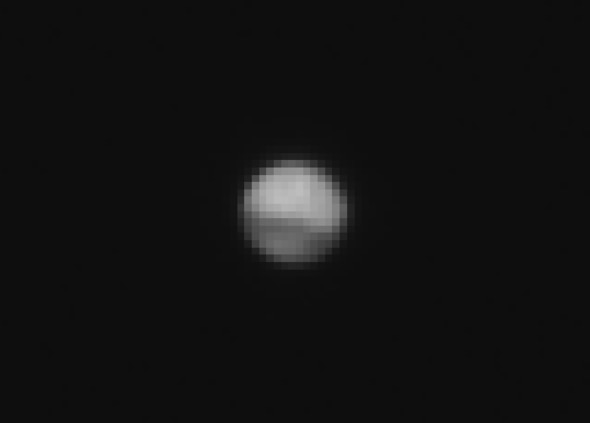Create a free profile to get unlimited access to exclusive videos, sweepstakes, and more!
ExoMars Sees Mars

When you spend a lot of time and effort to send a spacecraft to another planet, it’s a nice benchmark when that spacecraft first spots it.
The image above is Mars, as seen by the Trace Gas Orbiter, part of the European Space Agency’s two-pronged ExoMars program (the first mission is the TGO plus Schiaparelli, a lander that will test technologies for future missions, including the 2020 ExoMars rover). TGO and Schiaparelli were launched on March 14 and were about 41 million kilometers from its destination when this shot was taken.
Mars is only about 6,800 kilometers in diameter, so from that distance it was only a dozen or so pixels across in the camera of the Trace Gas Orbiter. That’s pretty small, which is why it’s hard to see much here. But it shows the camera works! To make the picture a little clearer, here’s a slightly (3 pixel Gaussian) blurred version of it:
The image release notes that the Tharsis region of Mars was facing the camera when the shot was taken. Tharsis is a huge area of Mars known for its four massive volcanoes, including Olympus Mons, the largest such beast in the solar system. I poked around and found a Mars picture by Hubble that more or less matches the ExoMars shot:
That was taken in 2003 and isn’t an exact match, but it’s close. Olympus Mons is the big splotch at the top center, and the dark southern region below it is called Terra Sirenum. Out of curiosity I shrank it to roughly the same size as the ExoMars picture, rotated it, and blurred it a bit to compare them:
Not bad. Not exact, but you can see the similarities. This first ExoMars mission will reach Mars in October, and once in orbit the camera (called CaSSIS) will be able to spot objects on the surface as small as 10 meters across—the size of a small house. So expect far more interesting picture than this coming this winter!


























